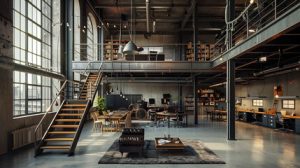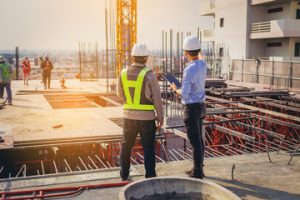
Residential construction encompasses a variety of structures built for habitation. Builders often choose different building materials, depending on factors like cost, engineering requirements and equipment needs.
One material that is becoming more popular in residential construction is concrete. GK Construction Solutions highlights how using concrete can help save money and energy in the long run while also providing many amazing benefits.
1. Strength
Whether it’s footings or foundations, concrete is a strong choice for your home construction project. It’s able to support heavy loads without cracking or damaging, even in extreme weather conditions. Concrete is also impervious to rot, which can destroy wood structures over time.
Concrete’s strength is based on its composition: cement acts as the binder, while water and aggregates like gravel and sand provide structural support. The mix is carefully proportioned to achieve specific strengths and consistency for each type of application. A key component in concrete’s strength is its poisson’s ratio, a measure of the material’s ability to resist tensile stress. During the curing process, the concrete is kept damp to prevent premature tensile stresses and reduce shrinkage.
Due to their innate fire resistance, concrete buildings can save homeowners significant money on insurance costs in the event of a disaster. Likewise, concrete’s natural insulating properties save on energy costs for heating and cooling homes.
With all of these benefits, it’s no surprise that concrete is becoming a popular construction material for homes. Its versatility and low maintenance demands make it a great choice for many modern architectural designs.
While some builders may find the appearance of concrete to be cold or Brutalist, it is possible to dress up concrete with innovative facades and other materials that enhance its aesthetic. Furthermore, with proper precautions, handling and mixing concrete is relatively safe.
2. Durability
Concrete resists degradation by water and fire, making it a good choice for structures near bodies of water or in high-fire risk areas. Concrete is also not prone to wood rot or mold. This means fewer repairs, lower maintenance costs and a longer-lasting home.
In addition, concrete walls provide excellent sound insulation. This means a more quiet and peaceful home environment without the outside noises of busy traffic or loud neighbors. Concrete also reduces outside vibrations, preventing the transmission of unwanted vibrations into the house.
Whether you are building a foundation or segmental retaining wall, concrete can be used in many different projects to meet your home construction needs. Using concrete for your next project will add durability, strength and value to your property.
Homeowners are choosing concrete more and more often as a primary building material, with a variety of benefits including energy-efficiency, safety, low maintenance, and environmental sustainability. The versatility of concrete and its cost make it an ideal option for new homes or renovations.
The strength of concrete is largely determined by the quality and ratio of aggregate, cement, and water. It is important to regularly check the strength and moisture of your concrete for problems like weak mixes or improper curing, which can lead to cracks. A simple test with a pressure gauge or moisture meter can help you save money by catching problems early.
Concrete is also a healthy alternative to traditional wood-frame homes, as it resists mold and mildew, which can trigger asthma and other respiratory issues. Concrete walls also block airborne pollutants, reducing the amount of toxins in the home. Additionally, concrete emits less volatile organic compounds (VOC) than wood. These VOCs can cause irritation to the nose, throat, eyes, and skin.
3. Energy Efficiency
Concrete is an energy-efficient building material, with insulated concrete forms (ICF) helping to reduce air infiltration and create a tight seal. This helps to cut energy costs by reducing heating and cooling bills, which in turn cuts energy waste. Concrete is also an eco-friendly option because it requires less energy to produce than other building materials such as wood and steel, resulting in a reduced carbon footprint from start to finish.
In addition, concrete’s thermal mass properties allow it to absorb and store heat, allowing buildings to stay cooler in the summer and warmer in the winter. This reduces the need for costly HVAC systems, making it an ideal choice for environmentally conscious homeowners.
Homes constructed of concrete are also safer. Concrete resists fire better than other materials, and is able to withstand high temperatures without damaging the structure. This can save families money if they live in an area prone to wildfires or have a home in a high-risk earthquake zone.
Concrete is also a non-biodegradable material, so it won’t rot or attract pests such as termites or ants. This makes it a great choice for exteriors, as well as interiors, as there is no need to protect the structure with a preservative. Additionally, unlike wood, concrete does not rust or corrode. This allows homeowners to keep their concrete structures looking new for years to come.
4. Green/Sustainable
Concrete is a sustainable and environmentally friendly construction material, as it can be produced with local materials and creates minimal waste during the production process. Moreover, it requires less energy to heat and cool compared to wood houses and can last for a longer period of time, thereby saving builders money on maintenance and repairs.
Concrete also resists fire and water, so it is a good choice for structures near bodies of water or high-fire risk areas. In addition, it doesn’t corrode like steel and won’t rot like wood, making it suitable for use in waterfront or marine construction projects.
Additionally, the natural elements in concrete are durable against abrasion and erosion. The primary binder in concrete, calcium silicate hydrate, can withstand high temperatures and endures damage from flames for hours. The non-combustible nature of concrete helps to prevent house fires and slows the spread of flames, allowing families to evacuate their homes faster and often only require appliance and furniture replacement after a fire.
Another green advantage of concrete is its ability to be recycled after the structure has been demolished or repurposed. Industrial and other recyclable wastes can be substituted for aggregate materials, reducing the amount of waste that ends up in landfills. Additionally, concrete can be crushed and used as a sub-base for new buildings and to reinforce shorelines.
In addition, builders can save on insurance premiums and maintenance costs by constructing homes using concrete. Furthermore, when a concrete home is constructed with Insulated Concrete Forms (ICFs), the airtight insulation can save homeowners up to 25% in annual heating and cooling bills compared to standard stick-built houses.
5. Low Maintenance
Concrete is an extremely low-maintenance material, and it doesn’t require any special chemicals or methods for cleaning. When properly maintained, a concrete structure can last for decades without the need for any replacements or repairs. This long lifespan can help you save on maintenance costs and protect your investment.
Concrete can be used for a wide variety of construction projects, including driveways, sidewalks, retaining walls, and pools. It’s also often used in construction of mid-rise and high-rise buildings because it has the strength to withstand earthquakes and natural disasters, such as hurricanes and tornadoes.
Because of its low-maintenance benefits, concrete is an ideal choice for homes and buildings. It can be molded into any shape or size, and it can be poured and set quickly on-site, improving time efficiency for builders. Additionally, concrete does not need to be exposed to an ideal temperature during the construction process and can be constructed in many different weather conditions.
In addition, a concrete home is completely resistant to wood-eating insects, like termites and beetles. This eliminates the need for chemical treatments, and can save you a lot of money over the life of your home.
Concrete houses can also be designed to look just like traditional homes, making them an excellent option for homeowners who are concerned about aesthetics. Additionally, concrete homes offer many more benefits than other types of housing, such as lower energy bills and increased security. They can also provide protection from fires, severe weather, and break-ins. This can lead to savings on insurance, as well as reduced utility and maintenance expenses.


